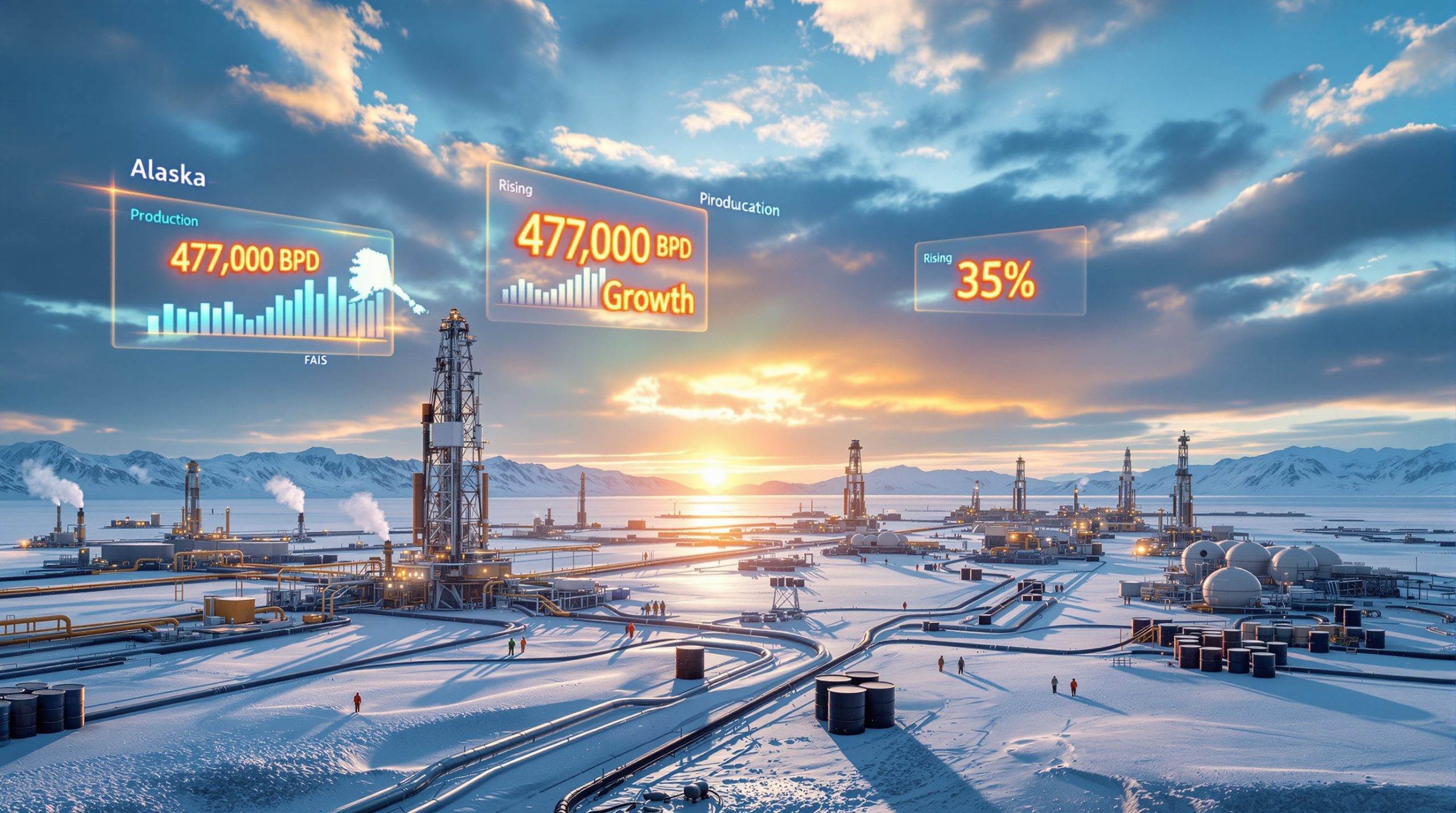What Factors Are Behind the Recent Copper Price Surge?
Supply Disruptions Shock Global Markets
The copper market has experienced significant turbulence as major supply disruptions ripple through global production networks. Freeport-McMoRan's force majeure declaration at Indonesia's Grasberg mine stands as the most prominent example, creating substantial supply constraints that have rattled the market. According to recent data, this unexpected disruption at one of the world's largest copper operations has significantly tightened available supply.
The impact extends beyond Indonesia, with Chile—the world's leading copper producer—facing its own challenges. Recent earthquake damage at major operations has compounded existing production difficulties, with output reportedly declining compared to previous years. These combined disruptions are forcing major producers to reassess their production capabilities and sales projections for coming quarters.
Industry experts note that these disruptions create a concerning disconnect between refining capacity and the availability of raw materials needed to keep production flowing. With smelters requiring consistent input to maintain efficiency, this gap between mining output and processing needs is amplifying market anxiety.
Monetary Policy Influence on Commodity Markets
Federal Reserve interest rate cuts have provided additional fuel for the copper price surge by weakening the US dollar, making dollar-denominated copper more attractive to international buyers. This monetary policy shift has sparked renewed interest in commodities as investment vehicles.
Lower interest rates reduce the holding costs for commodity inventories, making it more economical for traders and industrial users to maintain larger stocks. This policy environment has shifted investor sentiment from fixed income to hard assets as inflation concerns persist in many economies.
The resulting liquidity improvements in commodity markets have created a supportive backdrop for continued price momentum. Traders increasingly view commodities like copper as attractive alternatives in the current monetary environment.
Demand Fundamentals Strengthening
While supply disruptions grab headlines, underlying demand factors continue to provide solid support for copper prices. Chinese infrastructure stimulus has catalyzed near-term consumption, with grid investment acceleration creating substantial requirements for the red metal.
The structural shift toward clean energy technologies continues to drive long-term demand projections. Electric vehicles, which require up to four times more copper than conventional vehicles, represent a significant growth sector. The expansion of renewable energy infrastructure, from solar arrays to wind farms, similarly demands substantial copper inputs for a comprehensive energy transition strategy.
The data center construction boom to support AI computing capacity has emerged as another significant demand driver that many market analysts previously underestimated. With digital infrastructure expanding rapidly, the copper requirements for power distribution and connectivity continue to grow.
Global electrification initiatives require extensive copper wiring networks, adding another layer of consistent demand. From rural electrification projects to urban grid modernization, copper remains essential to power transmission and distribution systems worldwide.
How Significant Is the Current Price Movement?
Historical Context and Price Metrics
The current rally represents a weekly advance of approximately 4%, making it the largest gain since April according to market data. With prices approaching $10,600 per ton on the London Metal Exchange, copper trades just $500 below its all-time record high.
Despite global economic concerns throughout 2025, copper has demonstrated remarkable resilience with year-to-date price appreciation of approximately 20%. This performance places copper among the strongest performers in the commodities complex, as noted in recent copper price predictions.
The broader base metals complex has also seen significant gains. Zinc has climbed roughly 4% during the same period, reaching yearly highs. Meanwhile, tin has recorded an impressive 9% gain amid growing supply concerns, particularly from Indonesian operations.
Technical Analysis Indicators
Price action has broken through several key resistance levels that had previously contained upward movements. This technical breakthrough suggests potential for continued upside momentum as new buyers enter the market.
Technical analysts point to momentum indicators that remain in bullish territory, with moving averages maintaining positive slopes. The strength of trading volumes during price advances provides additional confirmation of the rally's sustainability.
Market observers note the reduced selling pressure even at these elevated price points, suggesting that producers and traders are reluctant to part with inventory in the current supply-constrained environment.
What Are Analysts Forecasting for Copper Prices?
Bullish Predictions and Price Targets
Investment banks have become increasingly bullish on copper's prospects as supply constraints persist. Analysts at major financial institutions have revised price targets upward, with some projecting potential for significantly higher levels if current supply issues extend further, according to Bank of America's projections.
Commodity trading houses highlight the risk of substantial inventory drawdowns in coming months, potentially exacerbating price volatility. Physical market participants note the tightness in concentrate markets, where miners sell their initial production to smelters for processing into refined metal.
Supply deficit scenarios are becoming increasingly probable according to multiple market specialists who track the balance between production capabilities and consumption trends. These projections incorporate both current disruptions and longer-term structural limitations on supply growth.
Contrarian Perspectives
Not all market observers share the bullish outlook. Some analysts suggest the possibility of a near-term price correction, pointing to potential overbought conditions after the rapid ascent. They argue that prices may have temporarily outpaced fundamental justifications.
Potential destocking in the US market could temporarily ease price pressures, according to some market watchers who monitor inventory cycles closely. Additionally, Chinese demand could moderate in late 2025 as certain infrastructure programs reach completion phases.
The International Copper Study Group data shows a theoretical production surplus on paper, though many analysts question whether this incorporates realistic assessments of actual operational disruptions.
Long-Term Structural Outlook
Looking beyond short-term price movements, the long-term outlook for copper remains supported by the green energy transition, which will require unprecedented quantities of the metal. From electric vehicle production to renewable power generation, copper stands at the center of decarbonization efforts.
The limited new mine development in the global project pipeline presents a significant challenge to meeting future demand. Major projects face increasingly complex permitting processes, community relations challenges, and higher capital requirements.
Declining ore grades at existing operations mean that maintaining, let alone increasing, production requires processing more material for the same metal output. This trend increases production costs and energy requirements, further constraining supply growth potential.
Geopolitical constraints on mining investment have increased in many jurisdictions, with resource nationalism and regulatory uncertainty deterring capital allocation to new projects. These factors contribute to the growing gap between projected demand and realistic supply capacity.
How Are Supply Dynamics Shifting in the Copper Market?
Production Challenges at Major Operations
Indonesia's Grasberg disruption has sent shockwaves through the market, with the timeline for resolution remaining uncertain. This major operation typically produces substantial copper volumes, and its absence from the market creates significant supply pressure.
Chilean production vulnerabilities have been exposed by recent natural disasters, highlighting the geographical concentration risk in global copper supply. With Chile accounting for approximately 28% of global mine production, any disruption there has outsized market impact on the global copper supply forecast.
Mining companies across multiple jurisdictions are struggling to maintain production guidance in the face of operational challenges, weather events, and resource depletion. Industry reporting indicates that several major producers have revised output projections downward.
Logistical bottlenecks affecting concentrate shipments further complicate the supply picture. From port congestion to shipping container availability, the movement of copper from mines to processing facilities faces multiple friction points.
Regional Production Trends
Chinese refined copper production continues to increase despite raw material constraints, creating competition for available concentrate. This production growth reflects China's strategic focus on maintaining domestic metal processing capabilities.
Democratic Republic of Congo output growth faces infrastructure limitations despite the country's rich resource base. Transportation challenges, power supply limitations, and regulatory complexity constrain the development pace of this important copper region.
South American producers increasingly contend with water scarcity and community relations challenges. In water-stressed regions of Chile and Peru, securing sufficient resources for processing operations has become a critical operational concern.
North American operations are benefiting from reshoring initiatives and domestic supply chain security efforts. Policy support for critical minerals production has improved the US copper production outlook and investment conditions for projects in the United States and Canada.
Industry Response to Supply Constraints
The industry has accelerated exploration for new deposits in response to market tightness and favorable price signals. Exploration budgets have expanded, though the lag between discovery and production means this activity won't address near-term shortages.
Mining companies are revisiting previously marginal projects that become economically viable at current price levels. Projects shelved during previous market downturns are receiving renewed attention as price expectations shift upward.
Technological innovation to improve recovery rates from existing operations has gained priority. Companies are investing in advanced processing techniques to extract more metal from existing throughput, helping to offset grade decline.
The industry has increased focus on recycling and circular economy solutions as secondary sources gain importance. Improved collection systems and processing technologies are enhancing the contribution of recycled material to overall supply.
What Does the Copper Rally Tell Us About the Global Economy?
Copper as Economic Indicator
Copper's traditional role as "Dr. Copper"—providing diagnostic insights into economic health—suggests that industrial activity remains more robust than some pessimistic forecasts indicate. The metal's price strength contradicts certain recession concerns that have circulated in financial markets, as tracked by Trading Economics.
The performance suggests underlying industrial activity remains resilient despite headwinds in certain sectors. Manufacturing indexes in key economies show mixed signals, but copper demand indicates continued infrastructure and construction activity.
The price action highlights a divergence between manufacturing and services sectors in many economies, with infrastructure spending and energy transition projects supporting industrial metal demand even as consumer sentiment wavers.
Investment Implications
Mining equities have shown strong performance relative to broader market indices as commodity prices rise. Companies with significant copper exposure have attracted particular investor interest as production constraints meet strong pricing.
Exploration companies have seen renewed interest from capital markets, with financing conditions improving for junior miners with promising copper projects. This represents a significant shift from previous years when raising development capital proved challenging.
Portfolio managers have increased commodity exposure as a hedge against inflation and currency devaluation risks. Allocation strategies increasingly incorporate natural resource equities for their correlation to physical asset values.
Resource nationalism concerns affect investment decisions as governments worldwide reassess mining regulations and fiscal terms. Companies operating in stable jurisdictions with clear regulatory frameworks command valuation premiums.
Geopolitical Dimensions
Copper's strategic importance in economic security has elevated its profile in policy discussions. Nations increasingly view secure access to the metal as critical to industrial competitiveness and energy transition goals.
US-China trade tensions influence market dynamics as both economic powers seek to secure supply chains for critical minerals. Policy initiatives in both countries reflect the growing awareness of copper's strategic significance, with potential tariff impacts on copper adding complexity to international trade flows.
Critical mineral designations are affecting the regulatory environment for copper projects in multiple jurisdictions. Streamlined permitting, financial incentives, and strategic investments characterize policy approaches to encouraging domestic production.
Government involvement in securing supply chains continues to grow, with strategic reserves, direct investment, and international partnerships emerging as policy tools to address potential shortages.
What Should Investors Watch for Next?
Key Market Indicators
Inventory levels at major exchanges—including the London Metal Exchange (LME), COMEX, and Shanghai Futures Exchange (SHFE)—provide critical insights into physical market tightness. Current low stock levels across these exchanges suggest limited buffer against further supply disruptions.
Chinese import data and premiums reveal real-time information about demand from the world's largest copper consumer. Premiums paid above benchmark prices for physical delivery indicate the urgency of spot market demand.
Producer hedging activities offer clues about industry price expectations. Increased hedging could signal concerns about future price sustainability, while limited hedging suggests confidence in continued strength.
Investment fund positioning in futures markets shows speculative interest and potential market momentum. Commitment of traders reports provide valuable data on how different market participants are positioned.
Potential Market Catalysts
Further supply disruptions at major mines represent the most immediate upside risk to prices. With multiple operations already experiencing challenges, additional problems could trigger sharp price responses.
Chinese infrastructure stimulus announcements have historically provided significant market impetus. Any new programs or acceleration of existing plans would likely support copper demand and prices.
Federal Reserve policy decisions continue to influence commodity markets through their impact on currency values and investment flows. Interest rate trajectories remain a key consideration for commodity investors.
Energy transition policy implementation, particularly regarding electric vehicle adoption and renewable energy targets, will shape longer-term demand projections. Regulatory changes or incentive programs can significantly affect copper consumption forecasts.
Technological breakthroughs in alternatives or efficiency improvements could alter demand projections in either direction. While substitution threats exist, efficiency gains often lead to expanded applications and overall demand growth.
Risk Factors to Monitor
Global manufacturing PMI trends provide leading indicators of industrial metal demand. Any sustained deterioration in manufacturing activity would eventually impact copper consumption.
Construction activity in major economies directly influences copper demand through building wiring, plumbing, and infrastructure applications. Housing starts and infrastructure spending announcements merit close attention.
Potential trade restriction escalation presents a risk to global supply chains and copper flow. Tariffs, export controls, or sanctions could disrupt established trading patterns.
Mine labor negotiations at key operations have historically created production uncertainty. Several major mines face upcoming labor contract renewals that could affect production continuity.
Emerging technology substitution possibilities, particularly in electrical applications, represent a long-term consideration for copper demand. While full substitution remains challenging, specific applications may see material replacement.
FAQ: Copper Market Dynamics
How does copper supply disruption affect other metals?
Supply disruptions in copper mining operations typically impact production of associated metals recovered as byproducts. When major copper mines experience outages, this often reduces availability of gold, silver, molybdenum, and other metals commonly found alongside copper deposits.
The interconnected nature of metals processing means that copper smelter constraints can affect processing capacity for other metals. With concentrate availability limited, custom smelters may prioritize certain feed materials based on commercial terms and technical requirements.
Resource allocation decisions by mining companies frequently shift when copper prices change dramatically. When copper prices strengthen, operations that produce multiple metals may optimize production to maximize copper recovery, potentially at the expense of other metals.
What role does copper play in the energy transition?
Copper functions as the fundamental conductive material enabling clean energy technologies. Its superior electrical conductivity makes it essential for efficient power transmission and motor functionality in electric vehicles.
The metal features prominently throughout renewable energy systems. Wind turbines require copper for generators, transformers, and collection networks. Solar power installations depend on copper wiring to collect and transmit generated electricity.
Energy storage systems utilize copper in battery connections, busbar systems, and thermal management. The metal's conductive properties help maximize efficiency and minimize energy losses throughout these systems.
Grid infrastructure expansion represents perhaps the largest copper requirement for energy transition. Connecting dispersed renewable generation to consumption centers necessitates substantial transmission network development, all requiring copper conductors.
How do copper prices affect mining company investment decisions?
Sustained higher copper prices typically trigger investment in both brownfield expansions and greenfield projects. Mining companies evaluate project economics based on long-term price assumptions, with higher projected prices improving investment returns.
The industry applies higher hurdle rates to new projects than to expansions of existing operations. This preference for brownfield development means price increases typically flow first to expanding current mines before triggering entirely new project development.
Capital allocation frameworks have become more disciplined following previous boom-bust cycles. Companies require projects to demonstrate profitability at much lower long-term price assumptions than current spot prices to ensure resilience through market cycles.
Project development timelines mean that price signals take years to translate into new supply. The period from investment decision to production often spans 5-10 years for major new mines, creating inherent supply inelasticity.
What is the relationship between copper and gold prices?
The copper-to-gold ratio serves as a closely watched economic indicator among market analysts. When copper prices rise relative to gold, this typically signals economic expansion and industrial growth as productive activity outpaces safe-haven demand.
Conversely, when gold outperforms copper, investors often interpret this as a warning sign of economic contraction. During uncertain economic periods, capital typically flows toward gold's perceived safety rather than copper's industrial applications.
The current strengthening of copper prices relative to gold suggests underlying economic resilience despite broader market concerns. This divergence between industrial metal performance and traditional safe haven assets reflects the complex economic environment.
Investment strategies often utilize this relationship for portfolio positioning. Asset allocators may adjust exposure to cyclical versus defensive investments based in part on signals from the copper-gold ratio.
Further Exploration
Investors seeking deeper understanding of copper market fundamentals can explore additional resources on production technologies, deposit geology, and demand drivers. These factors collectively determine the long-term supply-demand balance for this essential metal.
The relationship between copper and the broader energy transition merits particular attention. As electrification accelerates across transportation, energy, and industrial sectors, copper requirements continue to expand beyond traditional growth patterns.
Understanding regional supply dynamics provides valuable context for market developments. The concentration of production in specific countries creates vulnerabilities to local disruptions that can have global price impacts.
The intersection of technological innovation and resource constraints will shape the industry's future. From advanced mining techniques to material efficiency improvements, technology will play a crucial role in addressing the growing gap between copper demand and production capacity.
AI and computing infrastructure requirements represent an emerging demand category worth monitoring. As digital transformation continues, the material inputs needed to support expanding computing capacity will influence commodity requirements, including copper for power distribution and connectivity.
Wondering How to Capitalize on the Copper Market Surge?
Discover investment opportunities in ASX copper stocks with real-time alerts on significant mineral discoveries, powered by Discovery Alert's proprietary Discovery IQ model. Visit our discoveries page to see how historic mineral discoveries have generated substantial returns and position yourself ahead of the market with our 30-day free trial.




